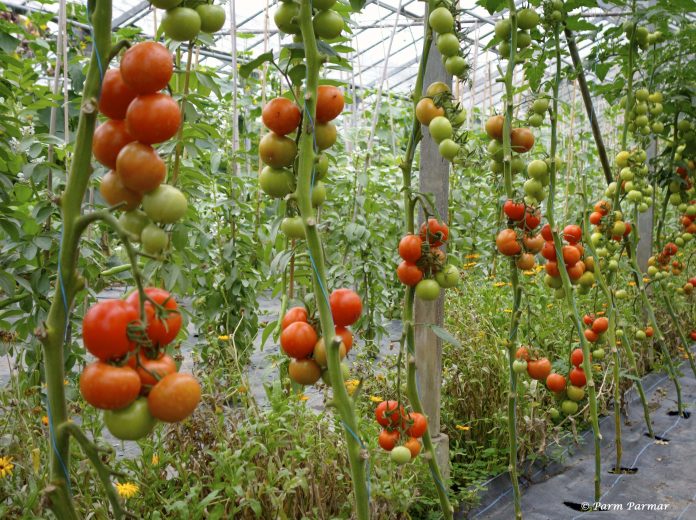Hybrid Tomatoes in Kenya: Ever wondered how you an venture into tomatoes farming and specifically the farming of hybrid tomatoes in Kenya? Well, here is how to grow hybrid tomatoes in Kenya on 1 acre as explained BY CAROL MUTUA:
Propagation and planting: They are propagated through seeds, which are sowed in a nursery and transplanted when 8-10cm tall to well-prepared beds or ridges. Plants may also be raised from cuttings (suckers that are virus-free). Shelter may be needed to protect seedlings from wind, exposure to sun and excessive rainfall.
How ex-matatu driver makes Sh. 800,000 monthly from his dairy farm
Spacing: Use 60-90cm between rows and 45-60cm within rows. There are other measurements but spacing to be adopted will depend on cultivar, soil fertility, training and pruning to be done, and type of spraying to be used. Direct seeding is recommended in areas where bacterial wilt and meloidogyne are endemic.
Seed rate: Use 200-500g/ha depending on spacing and viability of seeds.
Fertilisers: Use farmyard manure at 20 tonne/ha before transplanting, 200kg/ha DSP (10g/plant) at planting, then top-dress with 100kg CAN/ha applied in two splits.
First split is done when plants are 20-25cm and second at 3-5 weeks later. Excess N application results in more vegetative growth at the expense of fruit production.
Training: Training in tomatoes involves both pruning and support. These practices are important when dealing with indeterminate tomato varieties.
Pruning would involve removal of axillary buds to end up with the desired number of shoots per plant or removal of excess flowers or fruits. This improves the quality and early yields of fruits but may reduce total yields compared with the same planting density of unstacked and unpruned plants.
Sex for freedom? Shocking tale of judge Ole Kantai and Sarah Wairimu
A support system is usually established when the plants are about 50cm high. Support can be by staking or trellising.
Pruned and supported tomatoes tend to suffer more sun scald compared to unpruned bushy tomatoes. In pruning, care should be taken not to damage the remaining plants or over expose the fruits.
Irrigation: Necessary in off-season or greenhouse crop. Crop has a high demand for water throughout the growing period.
Irregular watering together with lack of calcium may lead to blossom end rot. Erratic irrigation may also result in cracking and splitting of fruit skin.
Weeding: Frequent shallow weeding should be done. In untrained plants, weeding should be stopped after the crop forms a good canopy. Mulching is also effective in weed control.
Harvesting: It can start 70-100 days from transplanting for indeterminate cultivars or after 60 days for determinate ones.
During wet conditions, green mature fruits are harvested and ripened at warm conditions for several days.
Tomatoes can be harvested at different stages of maturity: mature green stage, breaker stage — 10 per cent pink/red, turning stage — 10-30 per cent pink, pink stage — 30-60 per cent pink, light red stage — 60-90 per cent pink/red, red stage — 90 per cent red and table ripe — entire fruit is red.
For processing, harvest when fully ripe. For fresh market, the stage of harvesting will depend on distance from production to market, consumer preferences, transport system and handling facilities and time between harvest and sale.
Grading of harvested fruits is based on size and colour. Ideal storage temperature will depend on the stage of maturity at harvest like mature green is best stored at 18°C. At temperatures of less than 10°C, colour development is affected while ripe fruits can be stored at 2-4°C.








